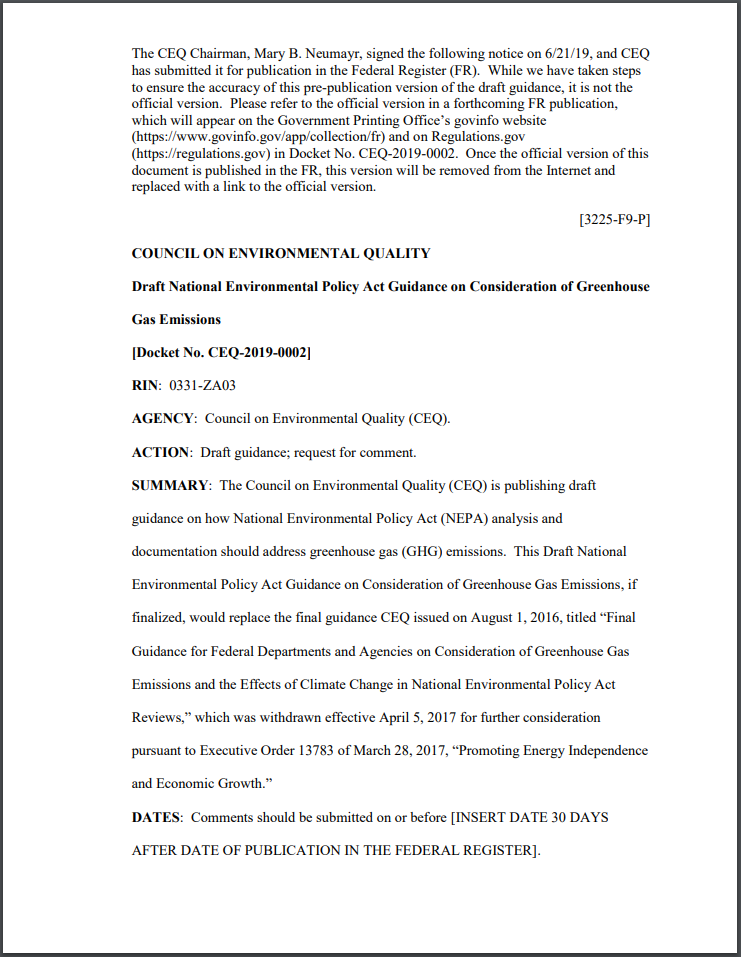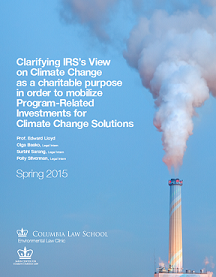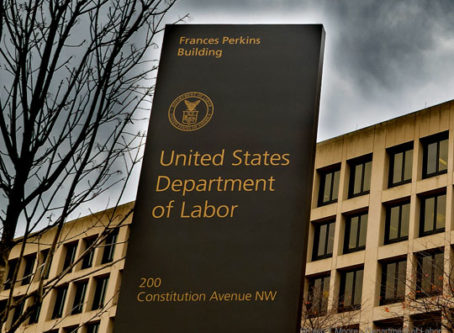 In the March 6th vote to approve the SEC’s final climate disclosure rule, the Commissioners split along party lines, with the rule passing by a 3-2 vote. It received a scathing review from Commissioners Peirce and Uyeda, both of whom suggested that the SEC should have re-proposed a new rule, and a tepid reception from Commissioner Crenshaw, who pointed out that this watered-down version of the proposed rule is little more than “floor,” or lowest acceptable baseline, for climate-related financial risk disclosure.
In the March 6th vote to approve the SEC’s final climate disclosure rule, the Commissioners split along party lines, with the rule passing by a 3-2 vote. It received a scathing review from Commissioners Peirce and Uyeda, both of whom suggested that the SEC should have re-proposed a new rule, and a tepid reception from Commissioner Crenshaw, who pointed out that this watered-down version of the proposed rule is little more than “floor,” or lowest acceptable baseline, for climate-related financial risk disclosure.
This post addresses both aspects of SEC’s rulemaking process: should the rule have been re-proposed, and, more importantly, how might the SEC update and strengthen the rule going forward. It is the second in a series of three blogs that address specific legal features of the rule.
Part One offers a summary of the final rule, and delves into the materiality threshold that was added throughout the rule, including for emissions disclosure.
Part Two, below, considers the future of the climate disclosure rule in the context of the SEC’s rulemaking process.
Part Three explores preemption questions in the context of other domestic frameworks: California’s climate-disclosure laws and the Environmental Protection Agency (EPA)’s GHG emissions reporting regime.
A Weakened Final Rule Faces Legal and Procedural Questions
The final rule promulgated by the SEC is less stringent than the one proposed two years ago. Notable changes include the omission of Scope 3 greenhouse gas (GHG) emissions disclosure requirements, as well as the introduction of a materiality qualifier throughout the rule, as discussed in Part One of this blog series. Even with these modifications, the rule still expands public companies’ disclosure requirements to include certain greenhouse gas (GHG) emissions data and information regarding climate-related financial risks.
Nonetheless, during the public meeting where the final rule was released, the conservative Commissioners questioned why the rule was not re-proposed in light of changes between the proposed and final versions. Given the onslaught of litigation challenging the rule – as of now, nine petitions have been filed by various aggrieved parties – this is worth exploring. And, assuming the rule endures, which it should: how could the SEC implement or improve the rule over time to make it more robust?
Should the SEC have Re-proposed the Final Rule?
The SEC undergoes notice and comment procedures as part of its rulemaking process. This is mandated by 5 U.S.C. § 553, which requires federal agencies to give sufficient notice to interested parties about proposed rules and then allow those parties to participate in the process by providing comments. The goal is to make sure that regulatory changes are analyzed before taking effect. The public must be given a meaningful opportunity to comment on proposed rules, typically 30-60 days.
If a final rule differs significantly from what was proposed, it may face legal challenges from parties who claim they were denied the opportunity to comment substantively. However, as long as the final rule is a “logical outgrowth” of the proposed rule, courts generally defer to the agency. In practice, courts have said that “interested parties cannot be expected to divine the [agency’s] thoughts” and have struck down final rules that were not sufficiently similar to proposals where agencies gave “insubstantial” reasons as to why stakeholders should have anticipated the content of the final rule. However, if the time to comment was sufficient, and sufficient notice was given as to the substance of the final rule, the court will not vacate or remand the final rule.
In the past, the SEC has reopened the comment period when large changes have been made to a rule, or new situations have arisen that merit additional public comment. For example, the SEC re-proposed an amendment to the definition of “exchange” under the Securities Exchange Act of 1934 Rule 3b-16 because new trading systems were likely to be covered by the updated definition that were not initially contemplated by the proposed rule. Commentators were offered an additional month to review and respond to the changes.
In the climate rulemaking, the SEC offered a very lengthy comment period on the proposed rule. The Commission extended the initial 60-day comment period by a month, and subsequently reopened the comment period for two weeks several months later. There was no shortage of engagement: the SEC received 24,000 public comments on the proposed rule. Comments continued to pour in long after the window had closed, meaning commenters continued to respond to changing considerations surrounding the rule. Further, the SEC gave notice through the proposal and concurrent public commentary that the rule could change significantly, including the removal of Scope 3 requirements and the addition of materiality qualifiers, which the agency foreshadowed with questions in the proposed rule. As the changes to the rule are consistent with considerations made public at the time the proposal, and as the rule is merely a narrower set of disclosure requirements that were all offered for comment in the proposed rule, there is no reason to think the Agency was denied meaningful public participation in the rulemaking process.
Final Rule as a Floor? Commissioner Crenshaw’s Ideas for the Future
Many investors and advocates who sought more robust climate disclosures and global harmonization of disclosure regimes are disappointed with the final rule. They have sought to frame the SEC rule as a first step toward more robust disclosure. Commissioner Crenshaw called the rule a “floor.” She described the rule as a “bare minimum,” stating that in her view the Commission is failing to meet its obligation to investors who need a more stringent disclosure rule, and offered several avenues for improvement.
The first avenue Commissioner Crenshaw suggested for improving the rule would be for the SEC to accept reporting prepared under more stringent disclosure regimes to satisfy its rule. California’s recent climate disclosure laws have provisions that allow for other jurisdictions’ climate-related financial risk reporting regimes to fulfill the state’s requirements, leaving room for interoperability. Since the SEC first issued guidance on climate risk disclosures in 2010, other countries have moved ahead in requiring these kinds of disclosures, like China. New Zealand was the first mover, and many jurisdictions now, including the UK, Singapore, and the European Union, impose GHG emissions disclosure requirements on corporations. The EU’s CSRD scheme, for example, is more stringent than the final SEC rule as it contemplates material Scope 3 GHG emissions disclosures, and requires Scope 1 and 2 GHG emissions information from smaller companies. The SEC could issue an order allowing for CSRD-related disclosures to supersede the baseline disclosures required established by the Commission. This would increase consistency and reduce compliance costs for filers, and could invite greater disclosure in circumstances where registrants could simply comply once with the tougher regime’s standards and not disclose information twice in two different formats.
Guidance is another pathway to strengthening the disclosure rule: the SEC often issues guidance documents on “topics of general interest to the business and investment communities” through interpretive releases that give the Commission’s views on federal securities laws and SEC regulations. The SEC has issued hundreds of these since its inception in 1933. Notably, the SEC issued guidance pertaining to climate-related risk disclosures in 2010, making clear it believed climate risks merit disclosure in a registrant’s 10-K, before undertaking this rulemaking process to create a robust disclosure regime rather than one open to looser interpretation. The SEC could issue further guidance to make the rule more stringent; for example, by refining the definition of materiality to have lower financial thresholds for climate-related risk impact to be material.
Issuing guidance does not require a formal rulemaking process. However, a recent decision by the Government Accountability Office confirmed that agency guidance is subject to review under the Congressional Review Act. The CRA is a tool that Congress can use to overturn certain federal agency actions. Although historically an infrequently-used tool, the CRA has become a favorite of those who oppose the administrative state’s agenda. Congress has 60 session days from when a rule is published in the federal register, or when it is proactively submitted for review, to review the rule. If Congress passes a resolution disapproving a rule, the rule is treated as though it had never taken effect and the agency that adopted the rule cannot reissue it or adopt a new rule that is substantially the same. If the session is interrupted before the end of the 60-day review period, the count starts over. Given concerns about the 2024 presidential election, agencies are currently scrambling to promulgate rules in advance of the 60-day cut off, making it highly unlikely that any additional Guidance from the SEC on its new climate disclosure rule will soon be forthcoming.
Commissioner Crenshaw’s third suggestion was a 21(a) Report. Under the Securities Act of 1934 Provision 21(a), the SEC is empowered to investigate possible violations of the federal securities laws and then “publish information concerning any such violations, and to investigate any facts, conditions, practices, or matters which it may deem necessary or proper to aid in the enforcement of such provisions.” The SEC could signal, through 21a Reports, that it will scrutinize determinations of materiality under the climate rule carefully to make sure that registrants err on the side of being overly inclusive in their disclosures as opposed to under inclusive. This report need not be subjected to any onerous procedural requirements but rather can serve as a model to other public companies about what the SEC is seeking in disclosures and when they fall short of the mark.
Finally, the SEC’s staff could issue “FAQs,” which offer interpretations without the authority of law. They can pertain to specific regulations or acts, and offer answers to common questions posed to agency staffers. FAQs about the climate disclosure rule could set expectations for market participants and suggest a more rigorous perspective on enforcement of the rule that could enhance disclosure over time.
Conclusion
The SEC has a number of tools at its disposal to strengthen the final climate disclosure rule as it emerges from litigation. It is important that the rule be treated as a floor to protect investors, and to support standardization of the global reporting regime. Commissioner Crenshaw’s ideas bear consideration, and engagement on any of them by the SEC would be a worthwhile signal to the market that it intends dynamic engagement on climate risk disclosure in support of investors’ needs.
In the meantime, investors can continue to drive disclosure practices through signaling with their investment allocation and shareholder engagement. This will be particularly important for companies engaged in materiality determinations, and for influencing disclosure from, for example, smaller enterprises that were exempted from the SEC’s GHG emissions disclosure requirements. Market dynamics may also continue to push registrants to expand disclosure beyond the rule. And registrants subject to other jurisdictions’ disclosure requirements may choose to disclose the same information to the SEC, in an effort to avoid liability risk or simply to reduce their compliance burden.
In short, a range of pathways remain available to strengthen the rule and ensure companies meet steadily higher disclosure expectations to ensure investors have the information they need about their climate-related financial risk.






